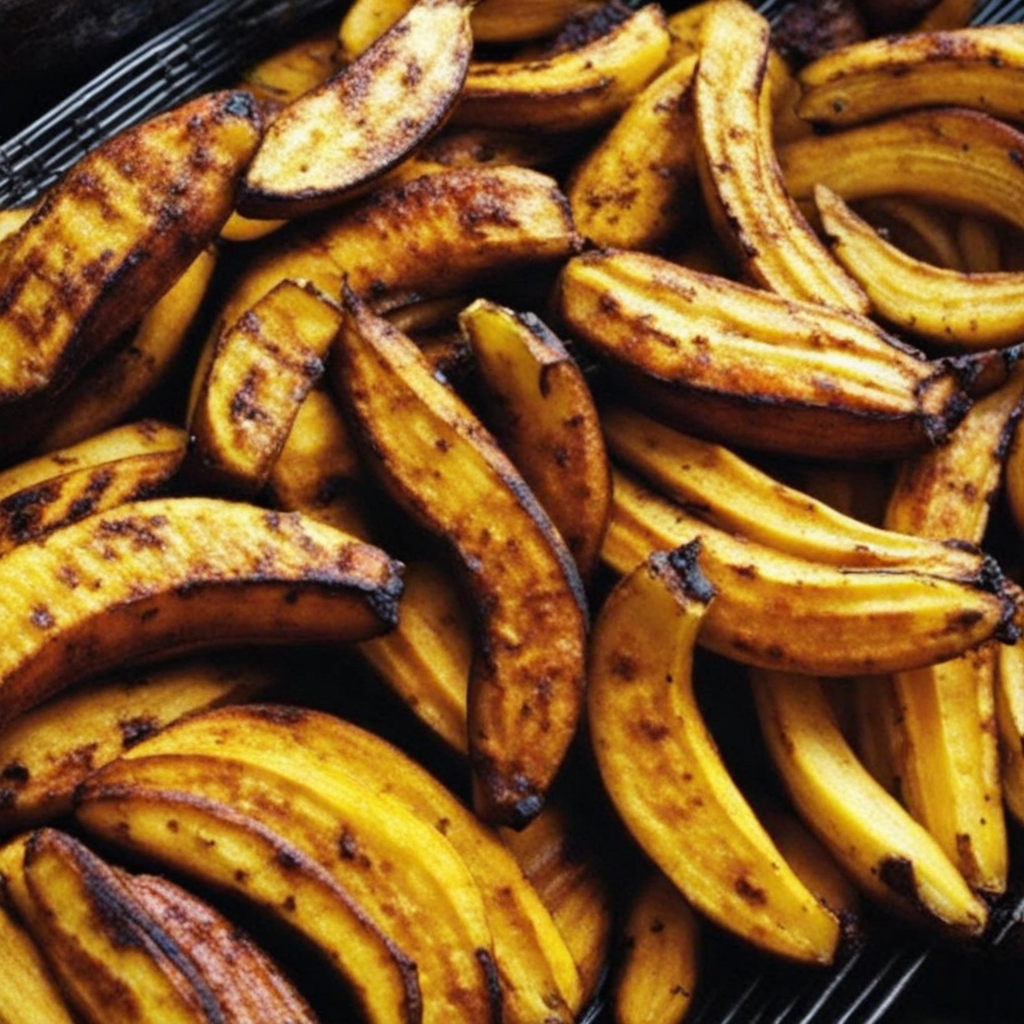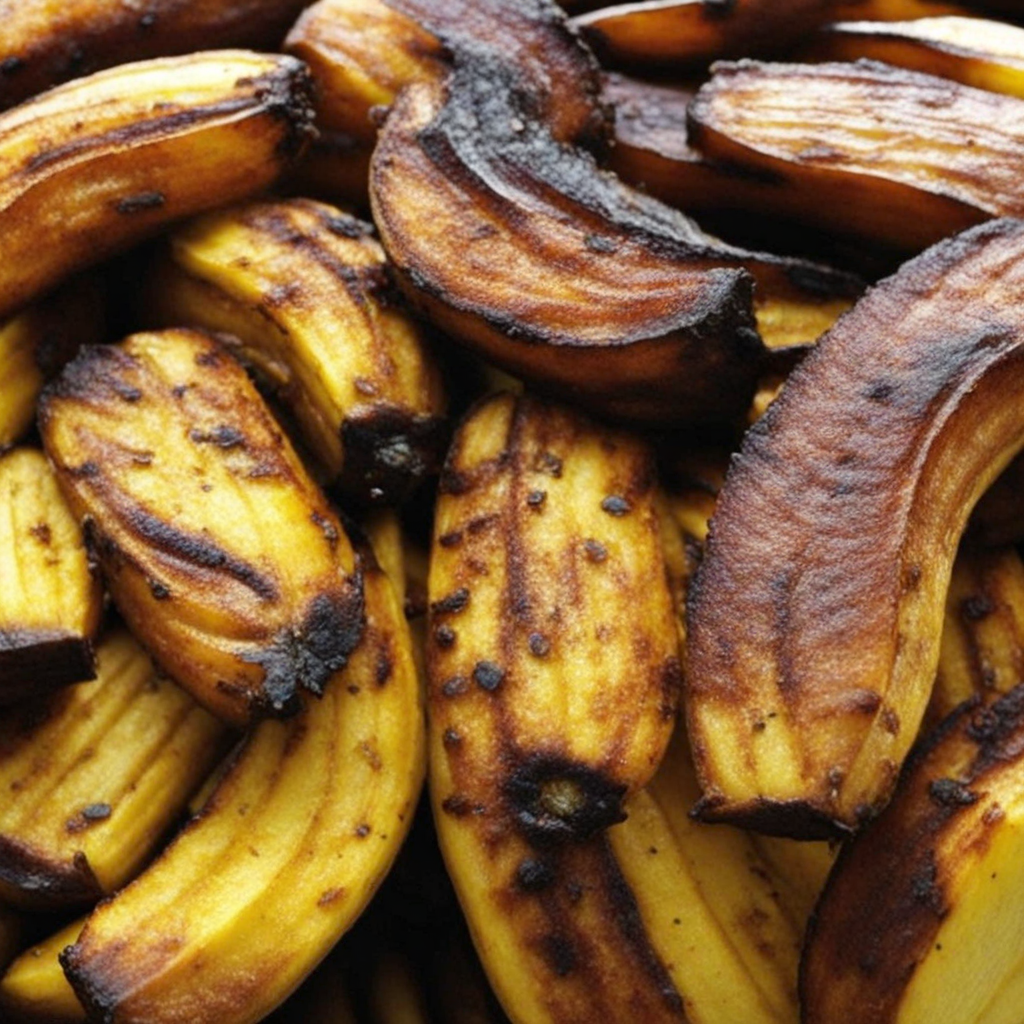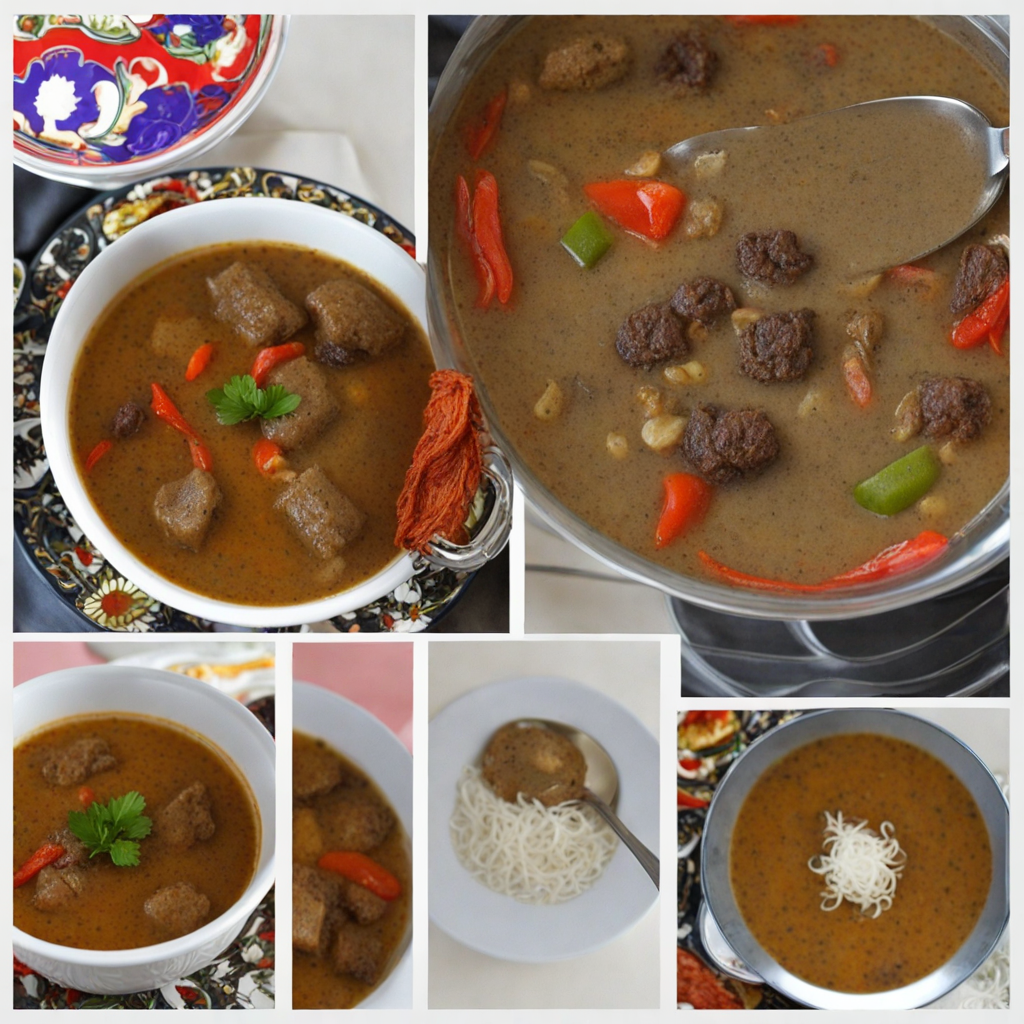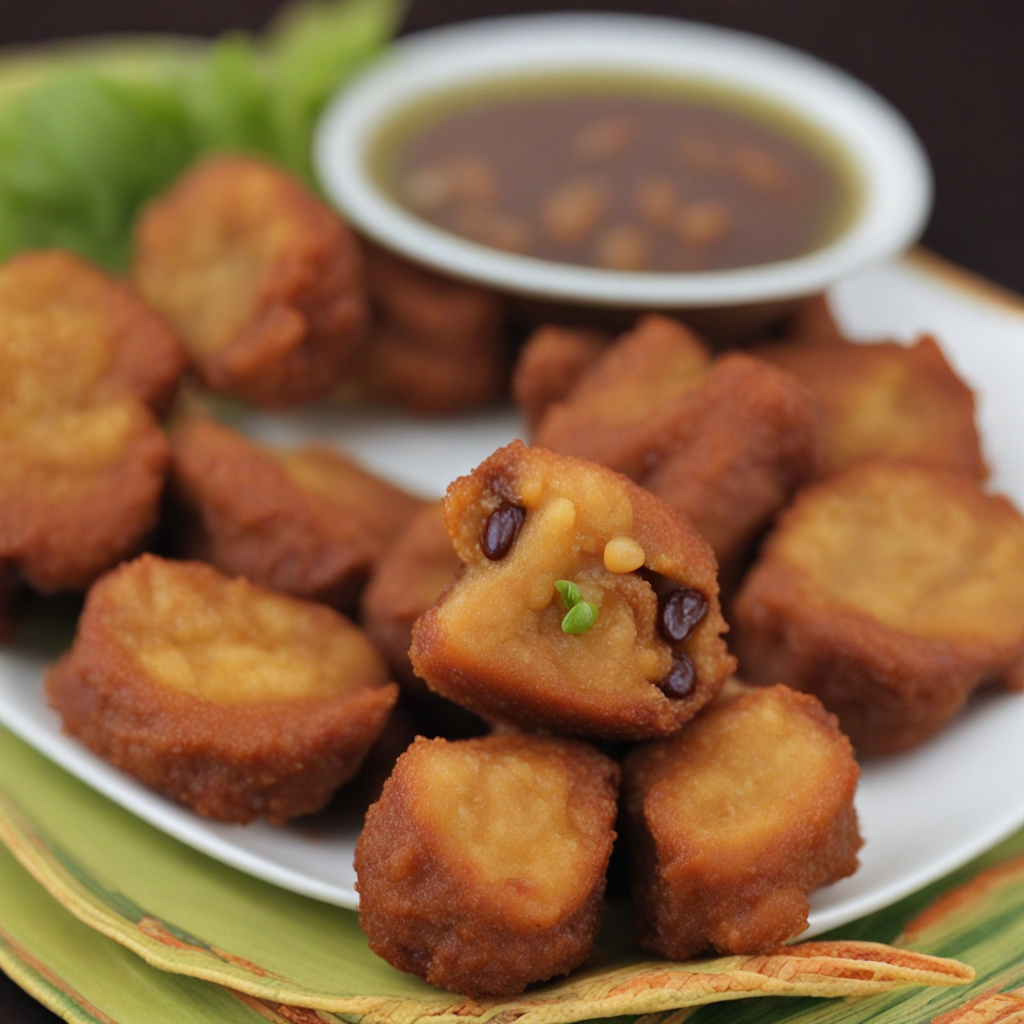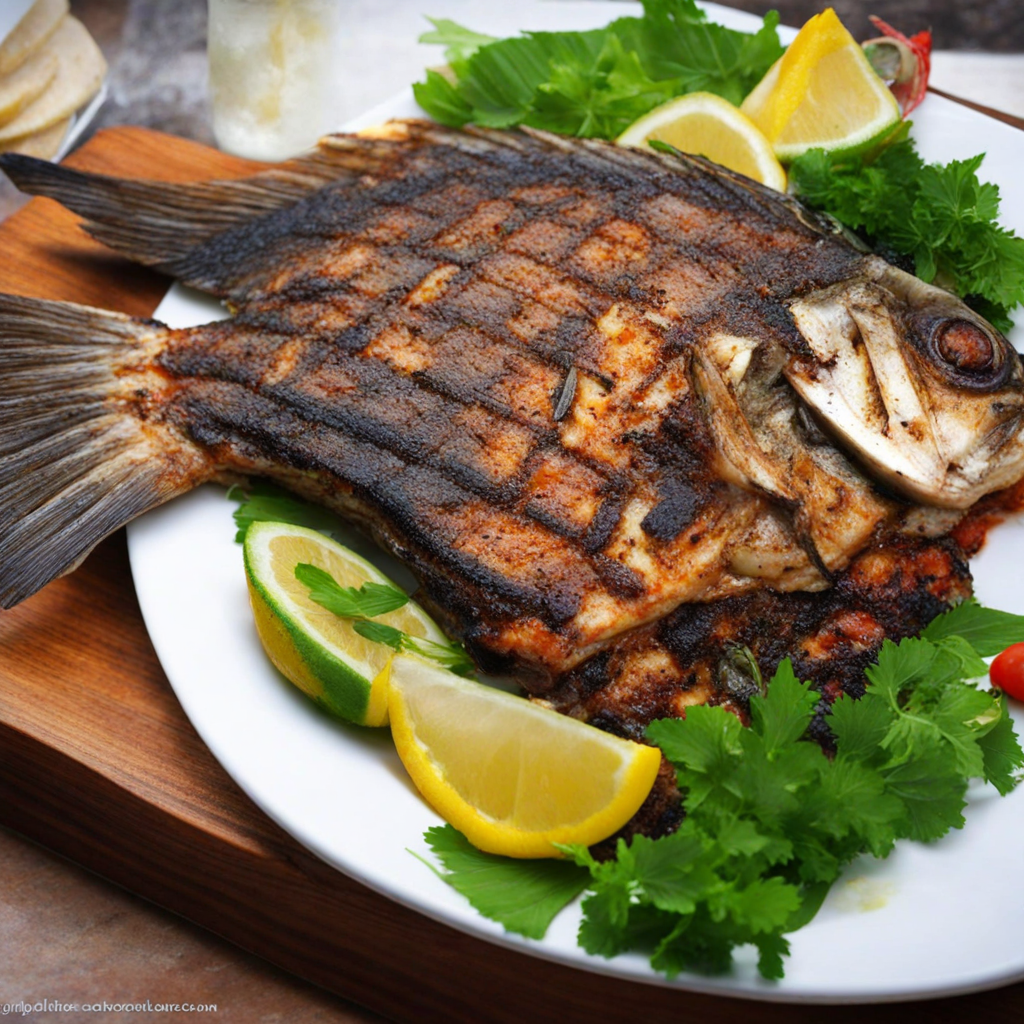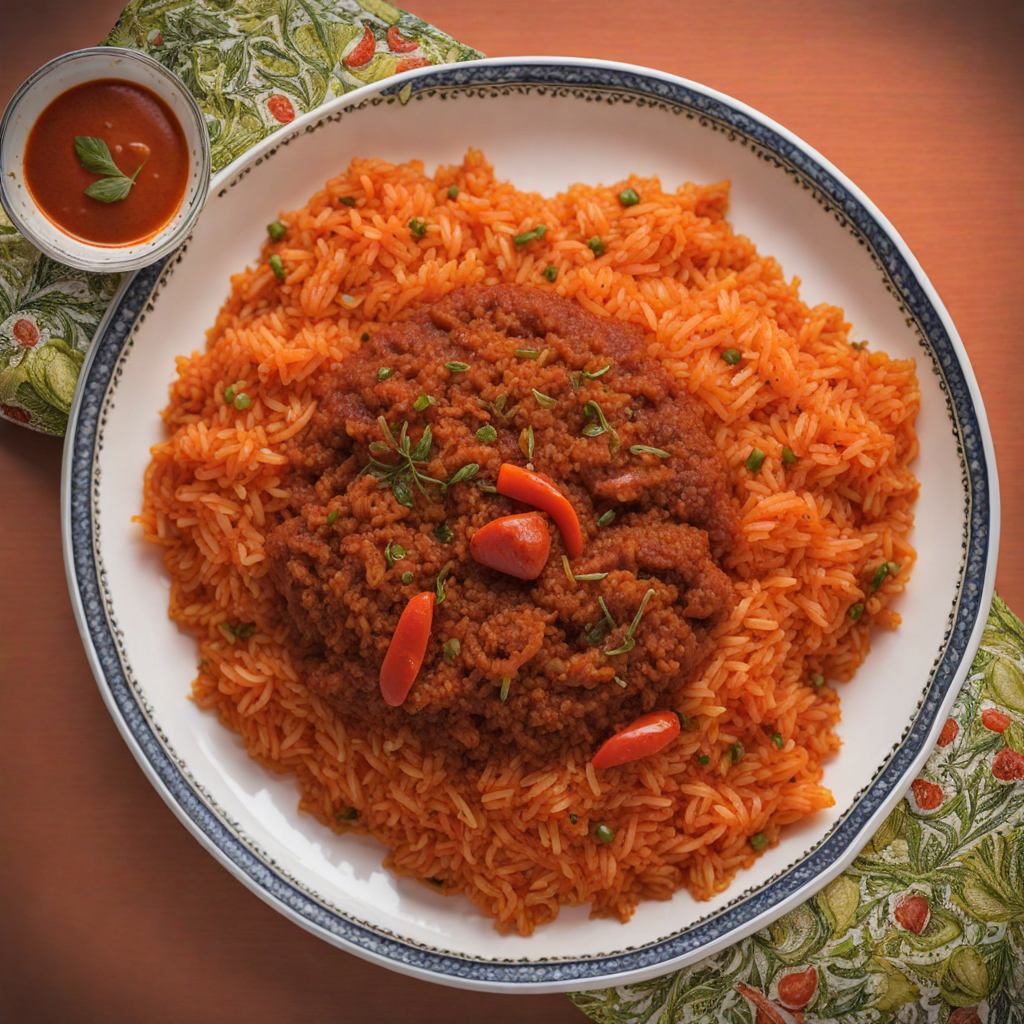Plantains
Plantains are a staple in Equatorial Guinea, embodying the vibrant culinary culture of the region. These starchy bananas are larger and firmer than their sweet counterparts, making them incredibly versatile in both savory and sweet dishes. When cooked, plantains can range from tender and sweet to crispy and salty, depending on their ripeness and preparation method. They are often sliced and fried, creating a delightful contrast between the crispy exterior and the soft, warm interior, making them a popular accompaniment to many local meals. One of the most beloved dishes featuring plantains is "fufu," where the plantains are boiled, mashed, and shaped into a dough-like consistency. This staple is typically served alongside stews or soups, absorbing the rich flavors of the accompanying dishes. Additionally, plantains can be grilled, baked, or even made into chips, showcasing their adaptability and ability to pair well with a variety of spices and seasonings that define Equatorial Guinean cuisine. The flavor profile of plantains is subtly sweet with a hint of nuttiness, particularly when they are allowed to ripen. This unique taste makes them an excellent canvas for culinary creativity, allowing chefs to explore different textures and flavors. Whether enjoyed as a side dish, a main course, or a snack, plantains are not just a food item in Equatorial Guinea; they are a cultural experience, connecting people through their shared love for this delicious and nourishing ingredient.
How It Became This Dish
The History of Plátanos in Equatorial Guinea Plátanos, the Spanish word for plantains, are a staple food in Equatorial Guinea and hold a significant place in the culinary landscape of this Central African nation. Derived from the banana family, plantains are larger and starchier than their sweeter banana counterparts. They serve as a fundamental ingredient in a variety of dishes and have deep roots in the cultural and historical fabric of Equatorial Guinea. #### Origins of Plátanos The history of plátanos in Equatorial Guinea can be traced back to the introduction of the plantain to Africa from Southeast Asia. It is believed that plantains were brought to the African continent by early traders and explorers, with their cultivation spreading across tropical regions. The introduction of the plantain coincided with the transatlantic trade routes, where various commodities, including crops, were exchanged between continents. In Equatorial Guinea, the humid tropical climate and fertile volcanic soil provided optimal conditions for growing plantains. The Bubi people, indigenous to the islands of Bioko, were among the first to incorporate plátanos into their diet, recognizing their versatility and nutritional value. The cultivation of plátanos became integral to the agricultural practices of the region, and they quickly became a staple food source, providing sustenance for local communities. #### Cultural Significance Plátanos carry immense cultural significance in Equatorial Guinea. They are not only a primary food source but also play a role in social customs and traditions. In Equatorial Guinean households, meals are often centered around plátanos, which are prepared in various ways—boiled, fried, or roasted. The simplicity of plantains allows for a myriad of culinary creations, making them a canvas for local flavors and ingredients. For many Equatorial Guineans, plátanos symbolize hospitality and community. In traditional gatherings, it is common to serve dishes featuring plátanos to guests, reflecting a warmth and generosity that is central to the culture. One popular dish, “plátano a la brasa” (grilled plantains), is often enjoyed during celebrations and communal meals, reinforcing the idea that food is a binding force in society. Moreover, plátanos are often used in ceremonial contexts. During important life events such as weddings, births, and religious celebrations, plantains may be included in the offerings, signifying prosperity and abundance. Their presence in these rituals highlights the intertwining of food and spirituality in Equatorial Guinean culture. #### Development Over Time As Equatorial Guinea underwent various phases of social, political, and economic development, the role of plátanos in daily life evolved. The colonial period, marked by Spanish rule from the late 15th century until independence in 1968, brought changes in agricultural practices and trade. Under colonialism, the cultivation of plantains was commercialized, with local farmers often producing them for export rather than for domestic consumption. This shift sometimes led to a decline in traditional cooking methods and the marginalization of indigenous culinary practices. However, despite colonial influences, the resilience of Equatorial Guinean culinary traditions persisted. After gaining independence, there was a resurgence of interest in local foods, and plátanos once again became a central feature of the national diet. The revival of traditional cuisines reflected a broader cultural renaissance, with an emphasis on celebrating local ingredients and heritage. In contemporary Equatorial Guinea, plátanos continue to be a staple food, enjoyed by people of all ages. Their versatility allows for creative adaptations, leading to modern interpretations of traditional dishes. Chefs and home cooks alike experiment with plantains, creating a fusion of flavors that pay homage to the past while embracing present culinary trends. The globalization of food culture has also influenced the way plátanos are perceived and prepared. International exposure has introduced new cooking techniques and flavors from around the world. However, despite these influences, the essence of plátanos remains rooted in Equatorial Guinean identity. Traditional recipes are preserved and passed down through generations, ensuring that the cultural significance of plantains endures. #### Health and Nutrition Beyond their cultural importance, plátanos are also valued for their nutritional benefits. They are an excellent source of carbohydrates, vitamins, and minerals, making them a vital component of a balanced diet. Rich in potassium, vitamin A, and dietary fiber, plantains contribute to overall health and well-being. Their versatility allows them to be included in various diets, catering to different culinary preferences and dietary requirements. In recent years, there has been a growing recognition of the importance of food security and sustainable agriculture in Equatorial Guinea. Efforts to promote local crops, including plátanos, have gained momentum, encouraging farmers to adopt sustainable practices that enhance the quality and yield of their harvests. This focus on sustainability not only supports local economies but also ensures that future generations can continue to enjoy the richness of their culinary heritage. #### Conclusion The journey of plátanos in Equatorial Guinea is a reflection of the country’s history, culture, and resilience. From their origins in Southeast Asia to their establishment as a staple food in Central Africa, plátanos have transcended time and circumstance, evolving alongside the communities that cherish them. They embody a sense of belonging and identity, serving as a reminder of the rich cultural tapestry that defines Equatorial Guinea. As Equatorial Guinea continues to navigate the complexities of modernity, the enduring presence of plátanos in its culinary landscape highlights the importance of preserving traditional foodways. In celebrating plátanos, Equatorial Guineans honor their past while embracing the future, ensuring that this beloved staple remains a cherished aspect of their cultural heritage for generations to come.
You may like
Discover local flavors from Equatorial Guinea


